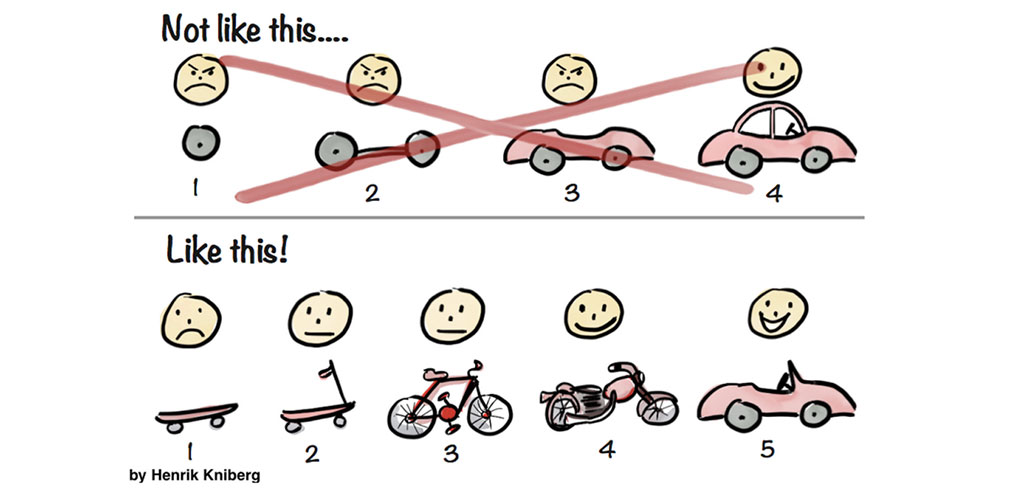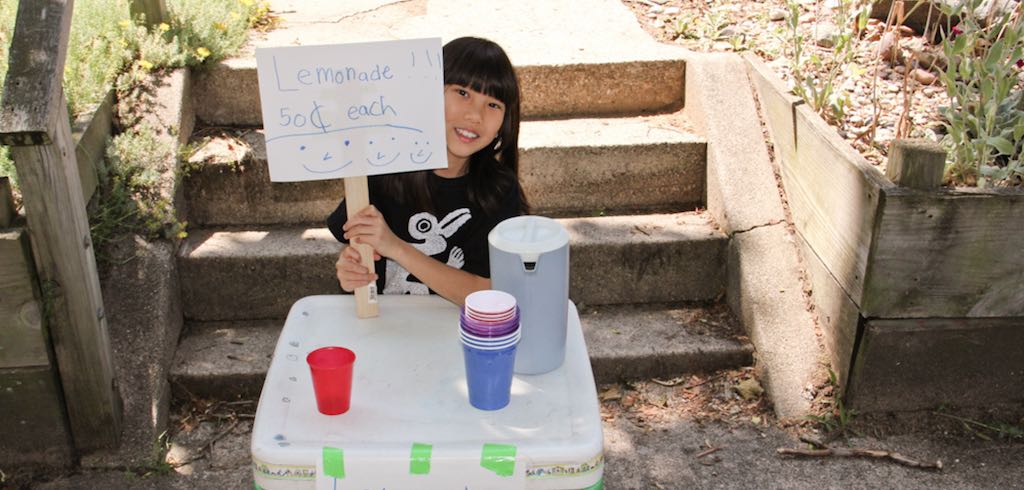Turning an idea into a startup is a long and exciting journey. When I had my first idea, I spent weeks on figuring out every detail of how the app was going to work. I prepared the wireframes, specification and paid the programmer to build the prototype. I was a project manager, so I knew exactly how to do that and thought that it was the most important part of turning my idea into a startup. Boy, was I wrong…
I traveled to Silicon Valley hoping to find investors. I also read The Lean Startup before. So I thought that I knew how to build products and do things. After I had talked to maybe ten investors, I realized that there was no chance to raise even a penny. My prototype was working really well and many liked it. What I learned, though, was that I skipped the most important step of launching a new startup. So I returned home, did what I was supposed to do before I started specifying and building the prototype.
I found out that I did a crucial mistake and other problems started adding up because of that. So after two or three months, I closed the shop and started working on something else. A great example of how to fail. At least I managed to fail fast. A good thing was that I was able to learn from my mistakes and become more successful with other ideas. We raised three rounds from the investors (including an angel round) for the startup that I’m currently working on.
Here is how I’m going to turn my next idea into a startup and you should do the same. Even though it’s not a magic pill – such thing doesn’t exist with startups, it will maximize your chance to raise money and launch your startup. Or help you learn that the idea isn’t worth pursuing further.
1. Start with validating the problem and solution with the target audience.

(image source: necrophone.com)
The very first thing that you do is that you need to define a problem that you want to solve and validated it with the potential customers.
“Do you want to help people find dates?”
“Do you want to help people find cheaper accommodation?”
“Do you want to help people travel cheaper?”
I’m sure that you get an idea of apps that help you with the problems above (Tinder, Airbnb, Uber).
This was the crucial step that I skipped. I believed that my idea was so good that everyone would love the app. When I returned home from Silicon Valley and started validating the problem, I wasn’t able to find a single person (out of ±50 interviews) who considers the problem that I was going to resolve as their biggest one.
This is the biggest rookie mistake. It’s called “falling in love with the solution“. There is no need to be ashamed of it. But if you want to succeed, you can’t skip this step. No matter what your idea is. Instead of falling love with the solution, fall in love with the problem that you want to resolve. Find the real problem and then the solution that is really going to solve it.
The most important thing about validating the problem is to never pitch your idea.
2. You build the prototype (or MVP) and get the feedback from early users.

(image source: Crisp.se, ©Henrik Kniberg)
MVP stands for minimum viable product and that’s exactly what you need to start with. There are many definitions of what an MVP is. I’m not going to overwhelm you with them, you can google it is you want to. What you need to know is, that an MVP is the version of product that your early adopters can already use to solve the problem, but it doesn’t have any bells and whistles that are not absolutely necessary.
Think of this blog post as an MVP and my book as a full product. If you think of Uber, the MVP would allow you to request a ride. It wouldn’t allow you to rate the driver, use promo codes, contact the driver, etc.
It’s important to collect as much feedback as possible from the early users. They will tell you what works well, what not and what is missing. That’s how you start improving the MVP into the final product. The reason for that is that you are building it for the users to help them solve that problem. This is also why you don’t need to spend weeks and months on specifying the product like I did it with my first startup.
Remember, that done is much better than perfect.
3. You start promoting and selling, while improving the MVP.

(image source: Flickr)
When I was working on that first startup that failed, I was thinking that the product will sell on its own. That I wouldn’t need anything more than to create a website, post to some LinkedIn groups with my target audience and run a small pay-per-click campaign. Of course, it didn’t work. Promoting and selling your product is at least as important than building the product. That’s the only way to get users and customers.
The particular strategy depends a lot from who you are selling to. You would have to use a different approach when selling to small business, corporations or end users. The important thing is to learn about the type of sales that you are going to do and start testing what works.
MVP has already started solving the problems of your early users. That’s you can start promoting it even before the final launch, while you keep working on it. In an ideal world, some of the early users would become your champions and help you spread the world within their network.
4. Collecting feedback will help you find the product-market fit.

(image source: Flickr)
Because the early stage startups have very limited resources, they need to be very efficient in what they do. In order to that, they need to know what brings results and what is a waste of time. Probably the only way to achieve that is to define metrics that you will follow (fewer is better than more) to determine whether your actions have positive impact.
Not everything, however, has a value that you can measure. Therefore, it’s also very important to collect qualitative feedback from the prospects, users and customers. I’ve been talking about that from the very beginning and you should never stop doing that. If possible, also ask the ones that decide to not to use your product for the reason for that. Not because you want to make a one-size-fits all product, but it may provide you with some insights that help you identify a mistake that you are doing.
5. Testing different marketing and sales approaches will help you find the right go-to-market strategy.

Having done all of the above successfully, you will be able to build the product that really solves the problem for the people and works well. Collecting the feedback and measuring the impact of various marketing efforts will also help you find the right go-to-market strategy. What I mean by that is that you will be able to determine what is the most efficient way of promoting your product.
It’s something that may be very different for each startup. Buffer and Groove are well known for their amazing content marketing. Some do attend conferences and trade shows. Other spend most of their marketing budget on pay-per-click advertising. Let other inspire you. But because something works for another company, it doesn’t mean that it’s going to work for you as well. Be mindful of that and find your own way.
6. You will start growing your team, because you won’t be able to do all on your own.

(image source: Wikipedia)
Every experienced founder and investor tells you that the team is the most important part of a startup. Some statistics say that the founder issues are the #1 reason of failing a startup. As you will be doing all of the above, you will realize that there is no chance that you (and the other founders) are able to do everything properly. Therefore, you’ll need to hire new colleagues to help you with it.
The best practice usually is to define what you do the most often and find someone who can do it much better than you. If you are all product people and need to sell, hire a sales manager, account manager or marketer. Depends on how do you sell.
There is one mistake that inexperienced founders do. They hire people with similar personalities than they are. If you need to call your prospects and do sales and all of you were introverts, do you think that an introvert sales manager would be able to sell your product? Think about it.
7. You raise money from the investors.

(image source: Flickr)
Raising money (even the seed round) is a long term process. Because the investors invest in people, there is a trick that can help you speed it up. Of course, if you can launch your startup without the investors and by getting cash from the customers, it’s almost always better. Always make customers and revenue a priority. Especially because fundraising takes time that you won’t be able to use to sell your product.
What you need to achieve is that the investors are already going to know you when you are ready to raise money. In order to do so, you need to start meeting investors as soon as possible. I mean it literally. It means that it’s good to meet them when you start validating your idea at the very beginning. You can meet them at pitch contests, startup meet ups, hackathons or conferences. A few rules apply:
- Don’t ask the investors for money when you meet them, you never get them. Rather for a simple advice that you can follow and let them know how it went.
- When talking to investors, be humble, but confident. Don’t pretend that you know everything, but show knowledge of the industry.
- Be mindful of the investor’s time. Instead of trying to talk to them for as long as you can, pitch them your idea (=the problem that you want to resolve) in 30 seconds, ask what do they think about it. They usually give you some half-generalist advice. Ask for their business card and whether you can let them know about your progress.
- Don’t attend every single event. If you do, how can you have time to work on your business.
- While building the relationship with the investor, learn about what companies do they invest in and ask for money when you are at that stage
As I mentioned, there is no such thing as magic pill for fundraising or startup success. But the steps above can maximize your chance of success, or allow you to fail fast and move on with some other idea.
What is the idea that you are currently working on?
